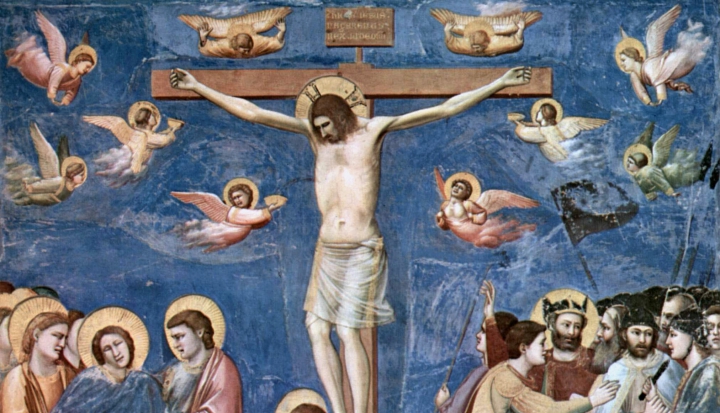“Jesus died for our sins.” As a teacher and churchgoer, I hear this expression quite often by people making a connection between salvation from sin and Christ’s crucifixion. In other words, “Jesus died so that I can go to heaven.” This connection between our salvation and the death of Jesus on the cross is often understood through the idea of atonement.
The idea of atonement interprets Jesus’ death on the cross as a sacrifice that brings us back into relationship with God. In short, “we are saved because of the cross.” The beginnings of this theology are found in New Testament attempts to find meaning in the execution of Jesus as an enemy of the state and one cursed by God.
After the resurrection, Jesus’ untimely death takes on new meaning. The “suffering servant” passage from Isaiah 53 (“by his wounds we are healed”) and referenced in the gospels, St. Paul’s letters, and the theological writings of the early church fathers such as Tertullian, Origen, and Augustine all offer various understandings of Christ’s death as sacrifice for human sin.
In the Middle Ages St. Anselm of Canterbury provided the definitive Catholic interpretation of atonement. The question for Anselm, in his work Cur Deus Homo, was how both God’s love and God’s justice can be interpreted in light of the grave reality of human sin. Anselm thought that humankind incurred an infinite debt through original sin and could not pay it back. God desired the flourishing of humankind but could not just “let things slide.” Restitution, or satisfaction, had to be made for the sake of God’s honor. So God offered God’s own self, through Jesus, as a perfect sacrifice to make payment for the human offense of sin. The crucifixion of Jesus, therefore, sets humankind free to choose eternal life.
Atonement can lead to the image of a bloodthirsty God. If atonement is nothing more than the Father sending the Son to die, then we worship a God of death, not a God of life. This logic finds its nadir in the contemporary Christmas song, “Born to Die.” “And the angels filled the sky/All the heavens wondered why/Why their King would choose to be/Be a baby born to die,” the song laments.
If Anselm were alive, he might protest that such a song honors neither God’s love nor God’s justice. It is an overly sentimental distortion of both. Anselm thought that Jesus’ death was freely chosen: an infinite gift to right the infinite wrong created by human sinfulness. The baby was not born just to be sacrificed. The adult made a choice out of love.
At its core, atonement is an attempt to help us understand how Jesus’ execution relates to our salvation. It is an attempt to help us understand how we now can be at peace with God despite sin. Yes, Christ died. But he also became human, lived, healed, taught, modeled, and was raised from the dead. And that matters for our salvation too.
This article also appears in the January 2018 issue of U.S. Catholic (Vol. 83, No. 1, page 49).
Image: via Wikimedia Commons












Add comment